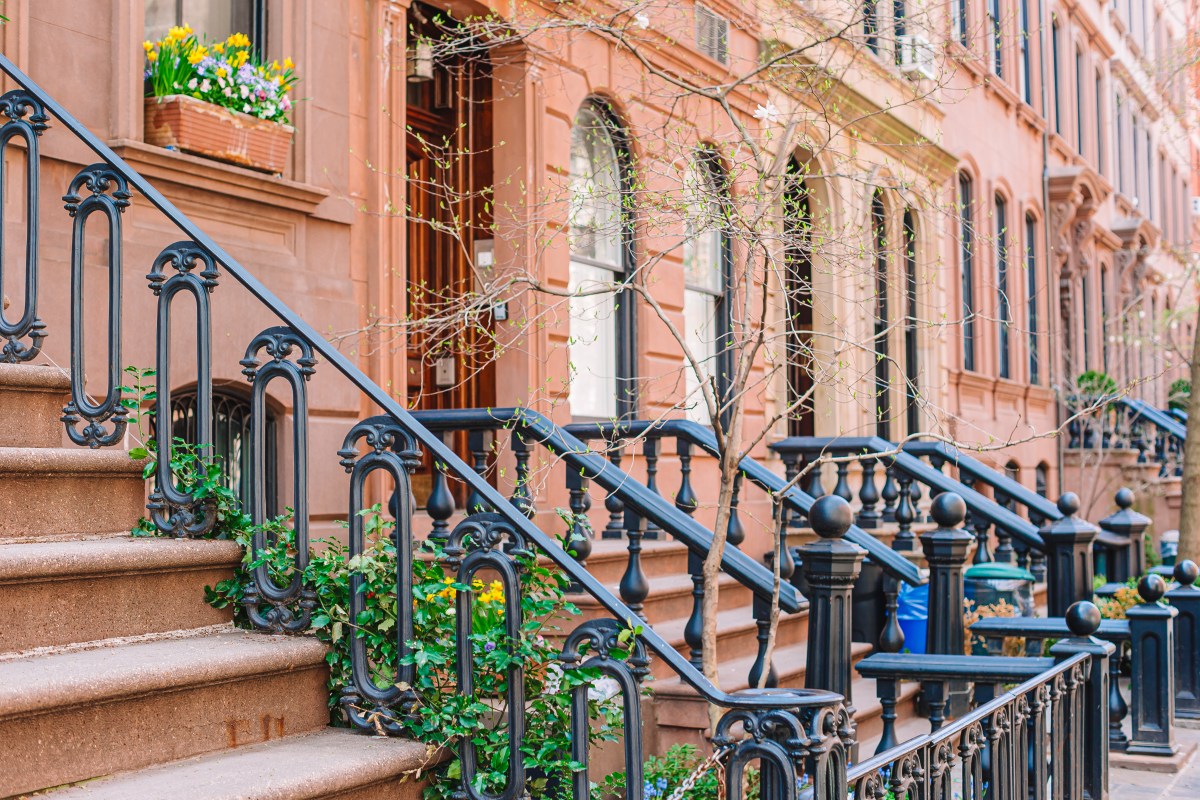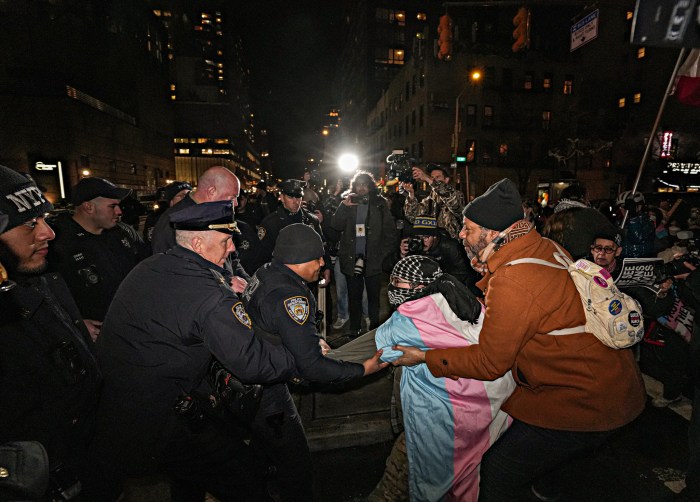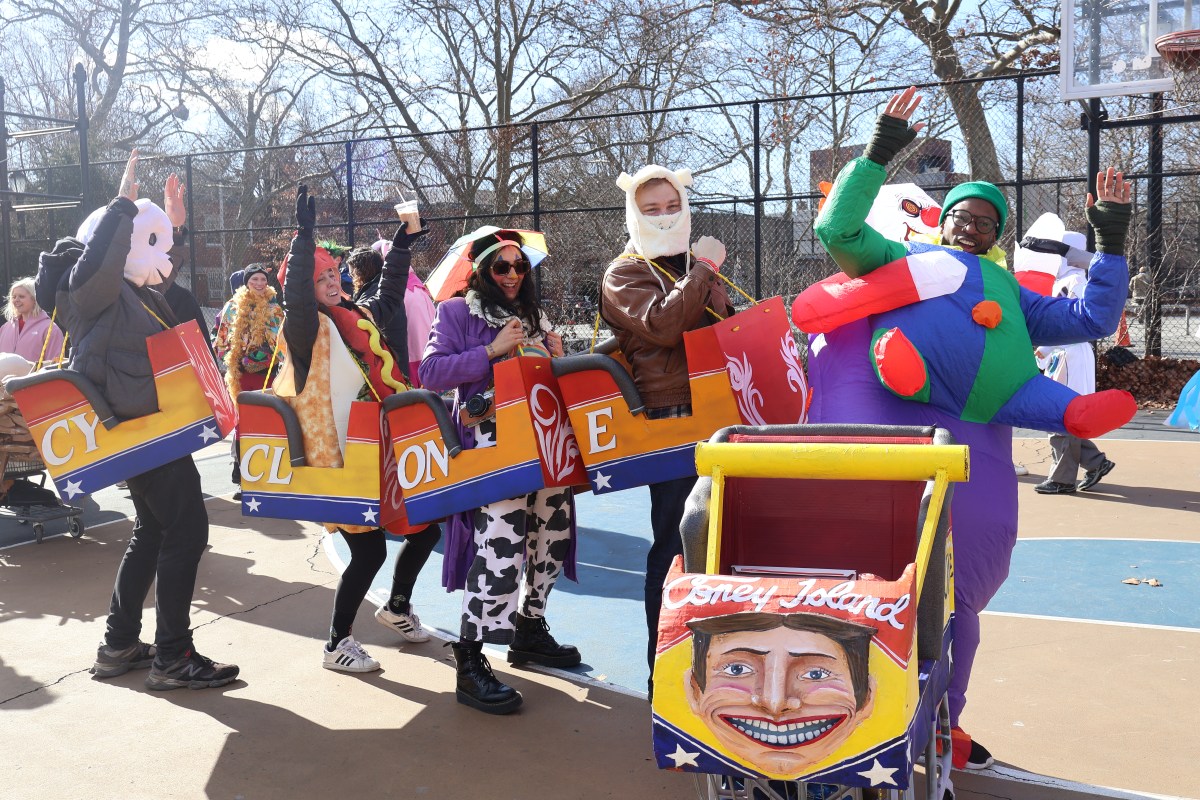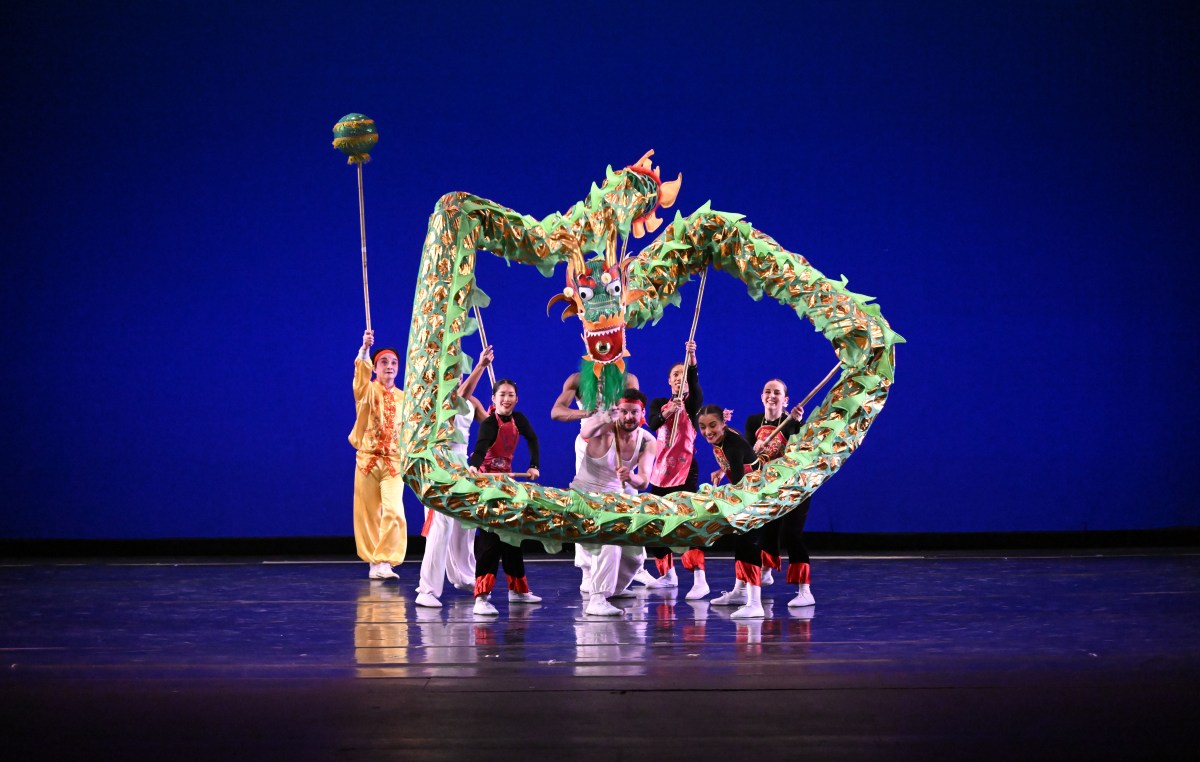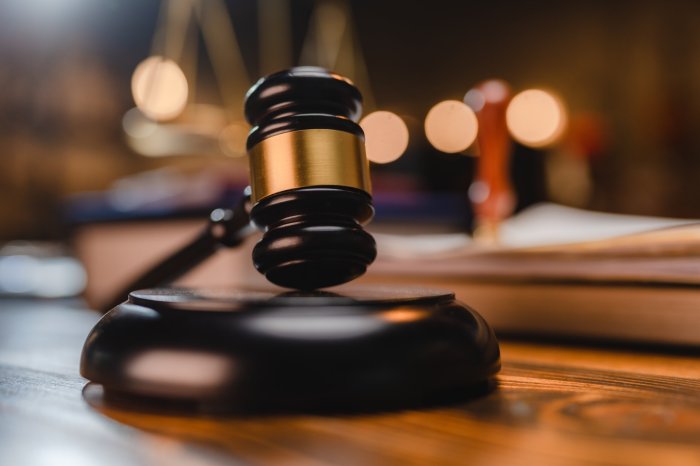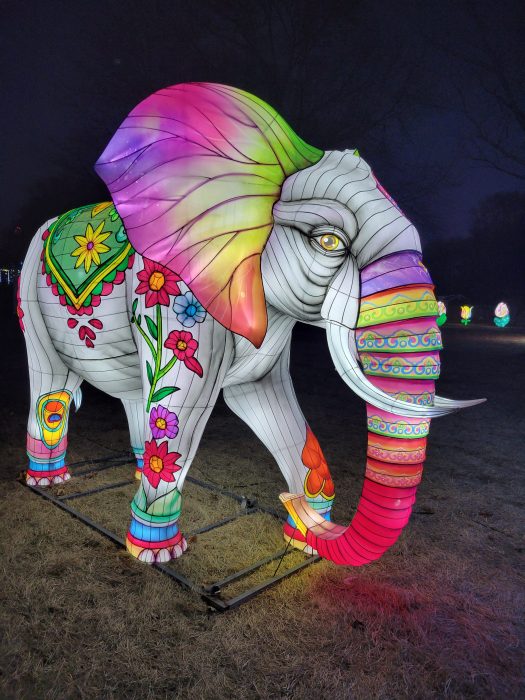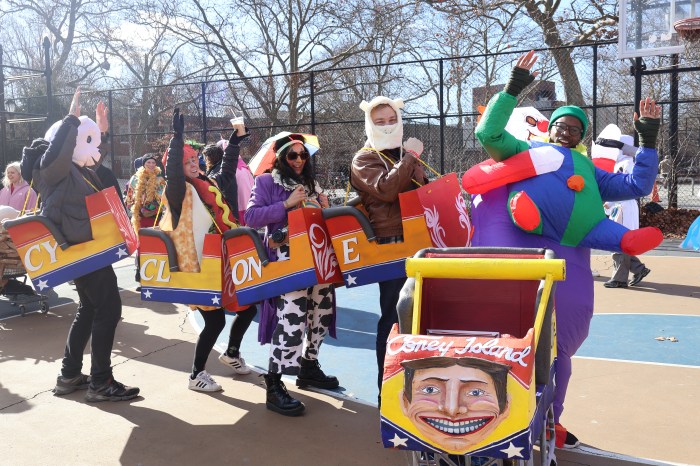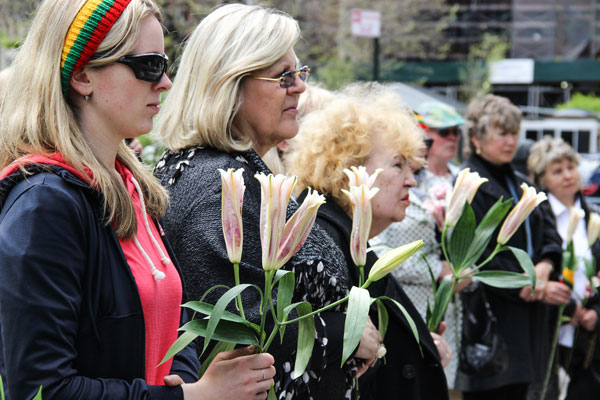
BY TEQUILA MINSKY | On Sunday, Elena Naujikinene was looking for the familiar form of Our Lady of Vilnius to guide her. But she had lost her way; her visual reference was no longer there.
Demolition began at least a month ago on her beloved 105-year-old church on this obscure spur of Broome St., sandwiched between a Varick St. parking garage and three small residential buildings hard by the Holland Tunnel entrance.
What was left of Our Lady of Vilnius was hidden from sight behind green plywood construction walls. Through a peephole, one could glimpse the old concrete front steps, arched window openings in the remnants of a wall abutting the parking garage, a pile of bricks and other rubble.
Eventually, Naujikinene was joined by other Lithuanian community members and parishioners, 22 in all, coming from around New York City and Long Island — plus former parishioner Gitana Merkeliene visiting from Lithuania — for the final goodbye to their spiritual and cultural home.
The church had required structural repairs and had a dwindling congregation, and so the archdiocese decided to close it. The doors were abruptly locked in 2007. But the church community resisted the closing.
“We were self-sustaining. We didn’t ask for money,” said Ramute Zukas, the congregation’s president. “We tried to fight with the Vatican. We involved the Lithuanian Embassy and Consulate. We went to civil court. We took it to Albany.”
But they didn’t prevail in court.
Zukas explained that Lithuanians fleeing mandatory service in the czar’s army before World War I settled in the Lower West Side area and worked on the Hudson River docks.
Community member Mindaugus (“Gus”) Bladziunas, who video-documented the church’s ongoing struggles, noted, “Building the Holland Tunnel in the ’30s decimated the community.”
In more recent years, Italian and Portuguese parishioners came to the church for services from neighboring Broome, Dominick and Van Dam Sts., joining members of the dispersed Lithuanian community. The church records were moved to nearby St. Anthony of Padua on Sullivan St.
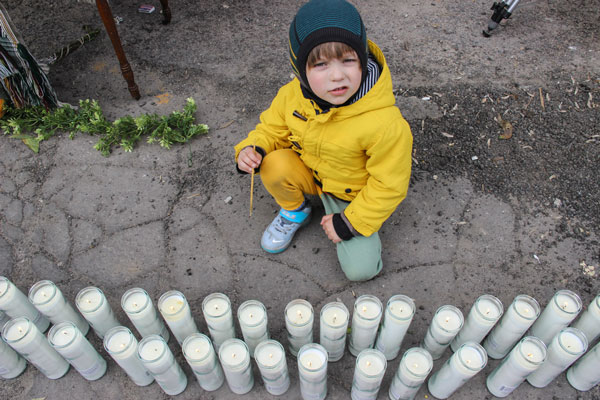
Two men in their 40s were among those at the “church’s wake” last Sunday. One admitted not having attended services.
“It’s heritage that’s more important than religion,” he said. “It was like a Lithuanian club.”
The church served as a community center. Bladziunas organized jazz and other musical events in its basement social hall.
“We’re a small nation, but we have guts,” he said. “We didn’t disappoint the founders. We fought until the last brick of the church had fallen.”
The Catholic Archdiocese sold the building for $13 million. It was then flipped a year later for $18.4 million. The adjacent residential building was purchased for $12.3 million, creating a site allowing for a planned 18-story, 30-unit condo building by SoHo Broome Condos LLC.
Last weekend, the congregation members lit 105 memorial candles — one for each year of the church’s life — at a small shrine they had put together by the curb.
Solemn-faced, they stood facing the site of their former house of worship, holding lilies, as they offered recollections and tributes, all in Lithuanian.
Rita Stelmokiene, their community officiate, said passionately, “This was not a demolition of a supermarket or coffee shop. We are standing near our historical church that our grandparents and people who came in 1900 built.”
Even after the church was shuttered, every Sunday, winter or summer, no matter the weather, people used to come and pray on the steps.
Merkeliene lived in Brooklyn for 10 years before moving back to Lithuania. Her son Kristupas was the last one baptized in the church in 2004. She just happened to be in New York for this memorial gathering.
“It is so sad moment for our Lithuanian community in New York and for me personally, too,” she said. “I was engaged with this church and the people so much!”
Following the public remembrances, a “Communion-like” wine was served, along with koldunai, a traditional Lithuanian pierogi-style dish with fried onions, mushrooms and sour cream. It was a final taste of fellowship at this location for these folks who fought so hard.



